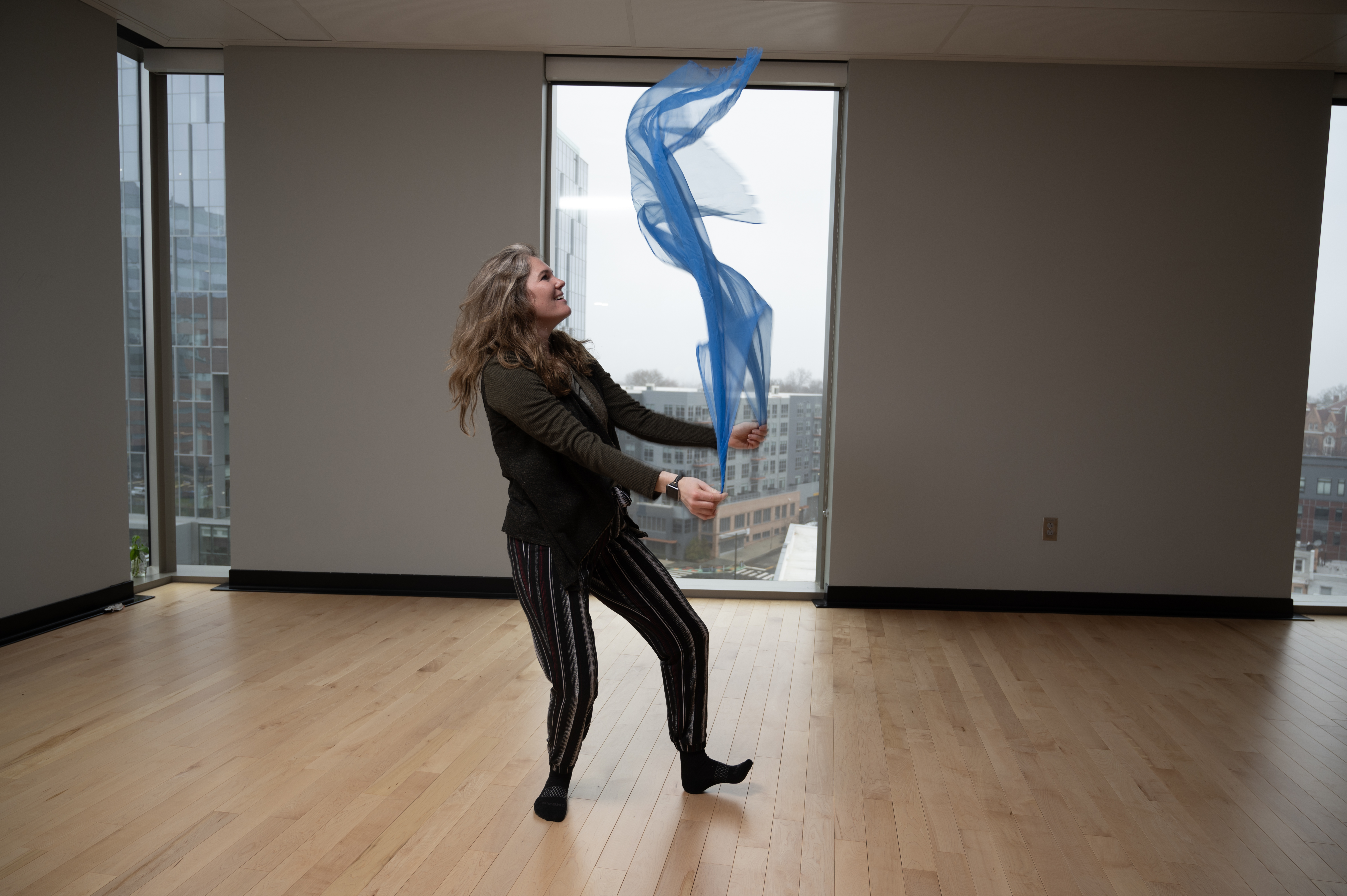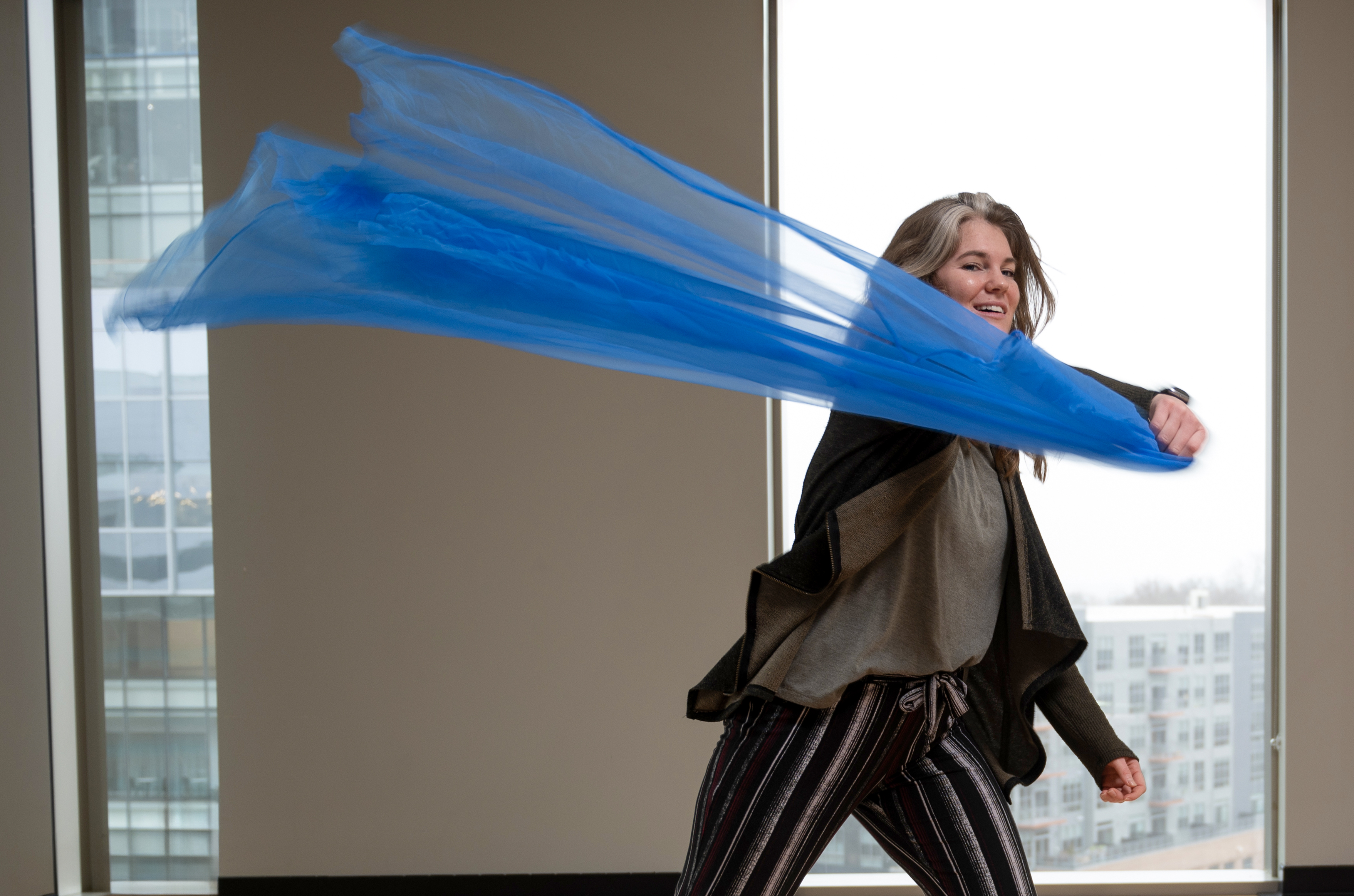Q&A with Dance/Movement Therapy Student Genevieve Hargrove
March 13, 2024

What first drew you to dance/movement therapy and counseling?
I was drawn to Dance/Movement Therapy and Counseling from my own experience of dance being therapeutic. I first started dancing as a way to connect to deeper parts of myself through embodied movement. Then my world opened wider when I began dancing in community at 5rhythms and Ecstatic Dance. This showed me that dancing with others could be healing. Shortly after, I started working as a street outreach worker for people experiencing homelessness. I learned a lot about the reality of being without a permanent place to live and gained hands-on experience with supporting individuals through crisis, mental health barriers and substance misuse recovery. This led me to become curious about therapy and how I could help more deeply. Dance/Movement Therapy was the perfect way to blend two worlds that I deeply cared about into a profession.

Do you have to be a dancer or have a background in kinesiology to become a dance/movement therapist?
I would say it is highly beneficial to have a background in dance and/or how the body is in motion (like kinesiology.) Dance/Movement therapists use dance and movement as a modality to connect to groups and individuals. We physically observe and assess movement through Laban Movement Analysis and also take into consideration our somatic experiences and other non-verbal cues. The combination of these elements can be challenging without a background in movement. However, as someone who comes from a non-traditional dance background, I have found that it can be done. This takes openness to creative thinking and curiosity in looking through a different lens. For example, in my Movement Observation and Assessment class, I can correlate topics to specific examples of past clients and their movement patterns that I encountered in street outreach.

How are creative arts therapies different than other kinds of therapy?
Although I am in my first year, it never ceases to fascinate me how creative arts therapies stand in between the profession of a therapist and the creative arts. Creative arts therapists have an extended toolset to be able to connect with individuals on an emotional, cognitive, physical and social level. I am currently placed in a practicum site in an inpatient acute psychiatric unit. I often notice that there are so many ways that I can therapeutically connect. In particular, dance/movement therapists can use body movement, props, imagery to elicit emotion, music to mobilize or calm, act out everyday topics (like the weather or candy) and/or creative improvisation. Creative arts therapy is a form of psychotherapy that can be used in many different settings. I believe that connecting through creative arts is humanizing to those we work with as sometimes it is hard to talk about our feelings or histories. Each of the modalities within creative arts therapy (dance/movement, art or music) provide a unique perspective on the therapeutic relationship.

What’s involved in becoming a dance/movement therapist? Do I have to have an undergraduate degree in dance or psychology?
To become a dance/movement therapist through Drexel you complete an accelerated two-year program. There is an opportunity for longer options of study, but I highly suggest the two-year track. It gives you the hands-on experience of two practicums and then an internship alongside classes and coursework. This experience is invaluable as you get to observe and put into practice what you are learning in real time. The coursework includes both modality-specific classes for Dance/Movement Therapy and Counseling coursework. For prerequisites, you don’t have to have a dance or psychology degree as stated on the website. I graduated with a bachelor's in public health concentrated in Community Health with a minor in Applied Spanish. This has some overlaps with the necessary social services coursework that is a prerequisite. However, many in my cohort have dance or psychology degrees as the skills are transferable to the program.